Explore animal cages, gladiator holding cells, and wooden elevators. Each space reveals the tension and anticipation before battles, with guides sharing vivid stories of drama, danger, and surprise arena entrances.
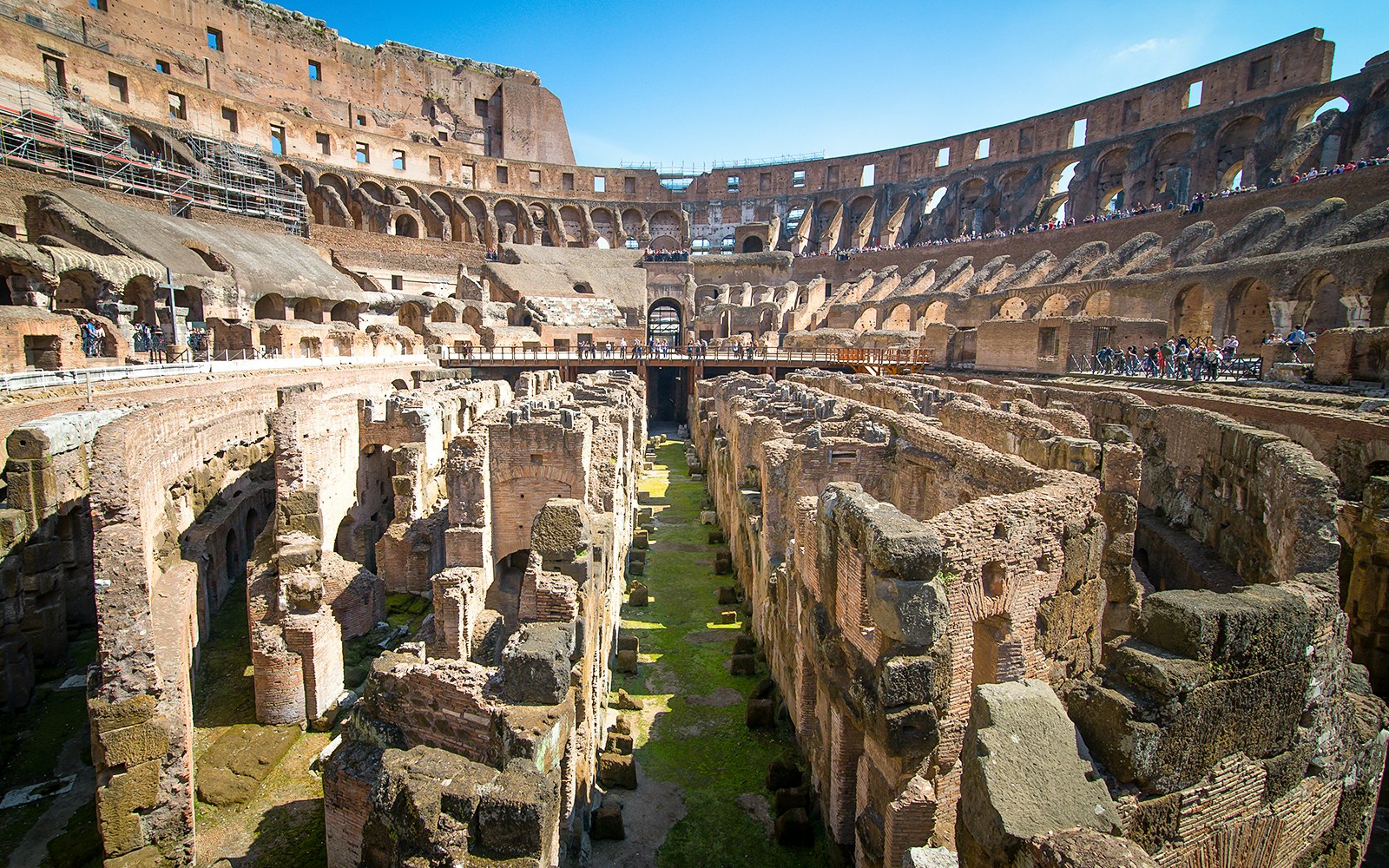
Only way to access Colosseum’s restricted underground, where gladiators once awaited their fate before battling on the arena floor.
Inclusions
Special access guided tour of the Underground and Arena Floor
Guided tour of Colosseum with reserved entry
English, French, or Spanish-speaking guide (as per option selected)
Guided tour of Palatine Hill & Roman Forum with priority access (as per option selected)
Small group of max 6 people (as per option selected)
Headsets
Exclusions
What to bring
What’s not allowed
Accessibility
Additional information
Reserved entry to the Colosseum at a time you choose, plus the freedom to explore the Forum and Palatine Hill within 24 hours.
Inclusions
Timed entry to the Colosseum
Access to Palatine Hill & Roman Forum
Audio guide in English, Spanish, French, German, Italian, Portuguese, Chinese
Hosted entry (as per option selected)
Special access to the Colosseum Arena (as per option selected)
Mamertine Prison access with audio guide (as per option selected)
Exclusions
What to bring
What’s not allowed
Additional information
You can cancel these tickets up to 7 days before the experience begins and get a full refund.
Book now without paying anything. Cancel for free if your plans change.
Join an exclusive tour of the Arena, the gladiators’ battlefield, limited to just a few visitors at a time.
Inclusions
Guided tour of the Colosseum, Palatine Hill, & Roman Forum
Special access guided tour of Arena Floor
English, Spanish, French, Portuguese, Italian or German speaking guide (as per option selected)
Small group of 15 people (as per option selected)
Timed entry to the Colosseum
Headsets
What to bring
What’s not allowed
Accessibility
Additional information
The Colosseum Underground, or hypogeum, was a maze of tunnels and cells beneath the arena floor. This was where gladiators and animals waited before being hoisted into the arena for battle. The hypogeum was equipped with mechanisms for elevating people and animals to the surface.
The Underground lies directly beneath the Colosseum’s arena floor. Access is restricted and available only through guided small-group tours that help preserve the site.
The Underground, or Hypogeum—a two-level labyrinth—was where the real drama began. Hidden from public view, it served as the backstage of Rome’s grand games. Meet your guide and start at the exclusive Colosseum underground entrance with a brief historical overview before descending below.
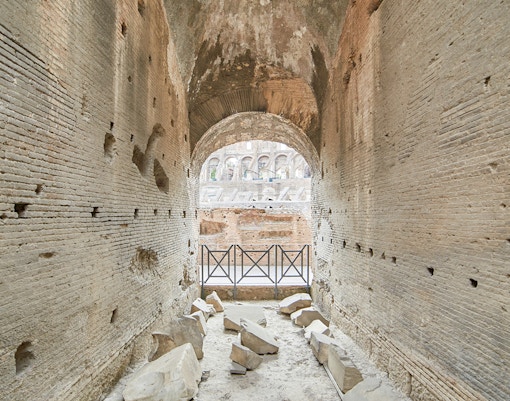
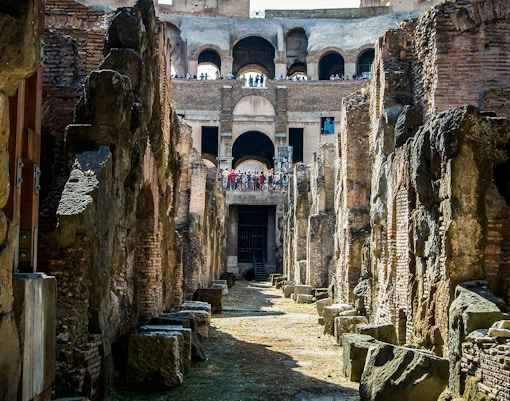
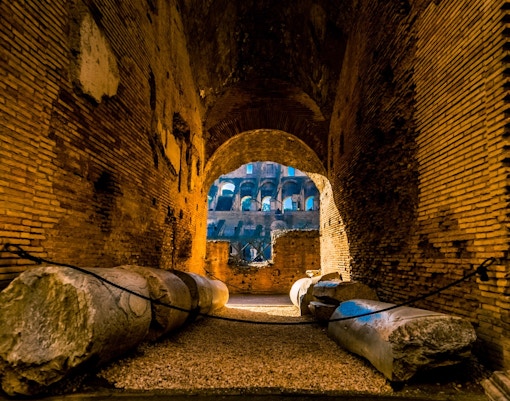
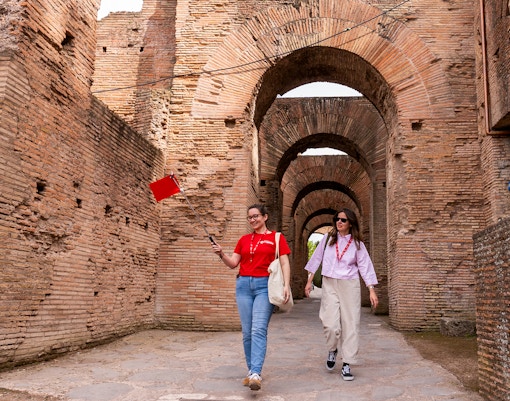
72–80 AD: Construction of the Colosseum begins under Emperor Vespasian and is completed by Titus. The Underground (hypogeum) is built to house animals, gladiators, and stage machinery.
80–404 AD: The Colosseum hosts gladiator battles, animal hunts, and elaborate shows. The Underground becomes the backstage hub for complex performances, using trapdoors and wooden elevators.
5th Century AD: With the decline of the Roman Empire, public spectacles cease. The Colosseum—and its Underground—falls into neglect and disrepair.
Middle ages: The structure is repurposed as a quarry. Stones are taken for other Roman buildings. The Underground is buried and forgotten.
18th–19th Centuries: Excavations begin, bringing parts of the Underground back to light. Archaeologists begin to uncover its original purpose and layout.
20th Century: Major restoration efforts aim to preserve the Colosseum, including structural work on the Underground chambers and tunnels.
2010s: The Colosseum Underground opens to the public via guided tours, offering an exclusive, behind-the-scenes look at Rome’s most iconic amphitheater.
Yes, but with exceptions. Tours run throughout the year but may be paused due to adverse weather, restoration works, or exclusive events.
No, the Underground is a restricted zone only accessible with a licensed guide. This is both for visitor safety and the preservation of the fragile archaeological area.
No, not all Colosseum tickets include access to the Underground. The Colosseum Underground requires a separate ticket, which includes a guided tour. This ticket typically also includes access to the rest of the Colosseum, the Roman Forum, and Palatine Hill.
It can be. Expect uneven paths, stairs, and limited seating. These tours may not be ideal for wheelchair users or those with mobility issues. Wear comfortable shoes and check accessibility details beforehand.
Yes, but best suited for older kids (8+). Younger children might find the historical depth and walking tiring. Some tours offer family-friendly formats—look out for those if traveling with kids.
The Colosseum, including the Underground, was commissioned by Emperor Vespasian of the Flavian dynasty, but the hypogeum was added later by Emperor Domitian.
The Colosseum was built between 70-80 AD, but the Underground was added later, approximately ten years after the inauguration of the arena.
Choose a small group tour (around 8–12 people) for an intimate experience. This gives you more time with your guide, better photo ops, and fewer crowds in tight spaces.
Visitors to the Colosseum Underground can explore the labyrinthine tunnels, learn about the logistics of staging the grand gladiatorial games, and gain a deeper understanding of ancient Roman history and culture.
Absolutely. These tours sell out fast due to limited group sizes and high demand, especially in spring and summer. Booking at least 2–3 weeks in advance is strongly recommended.